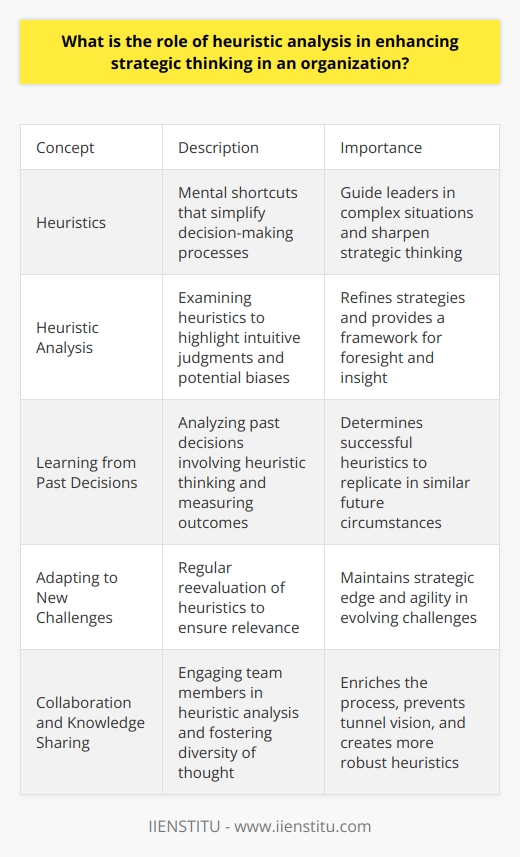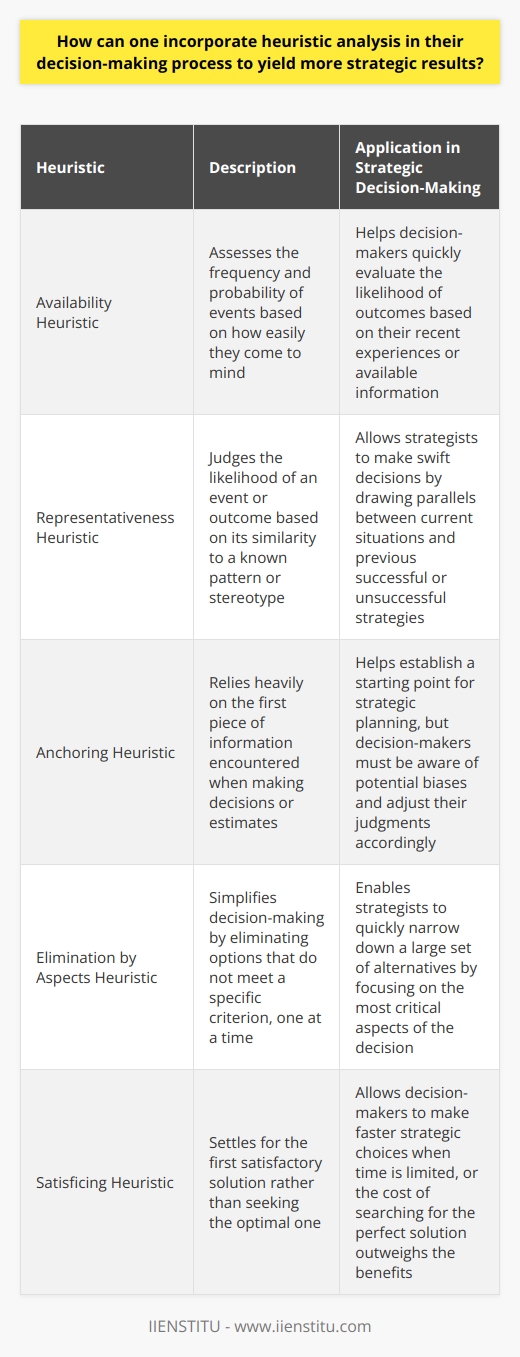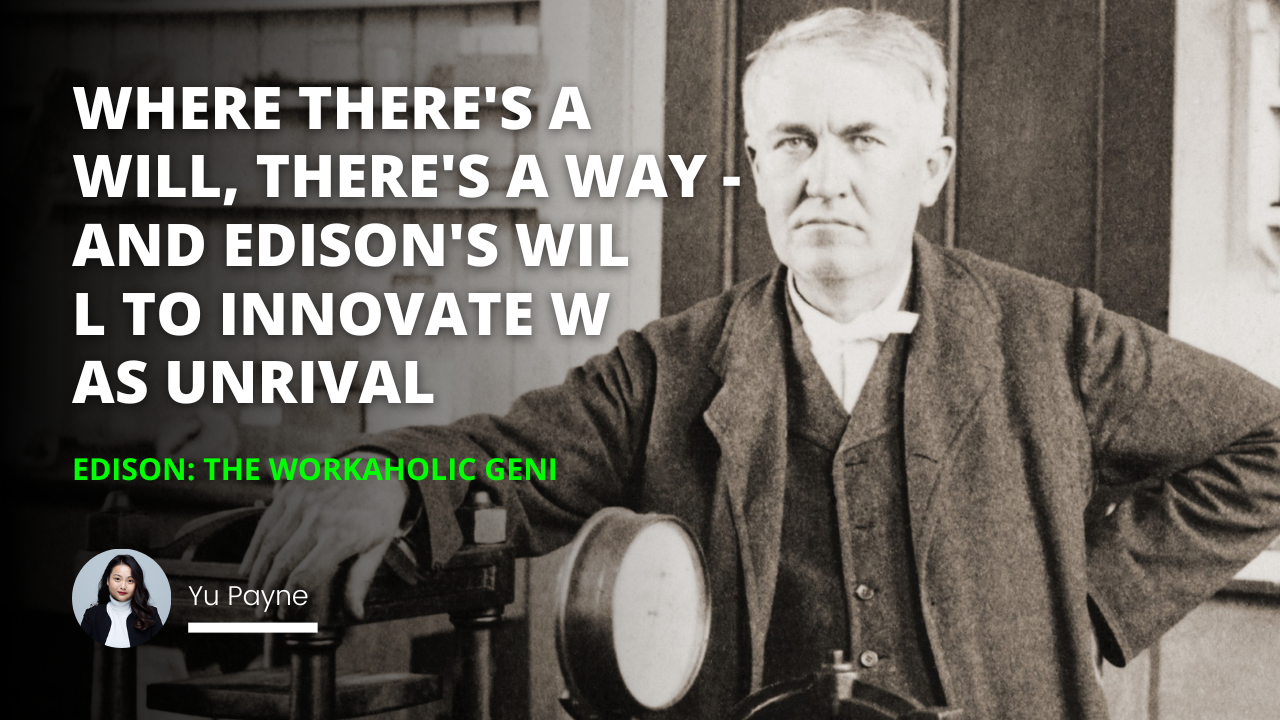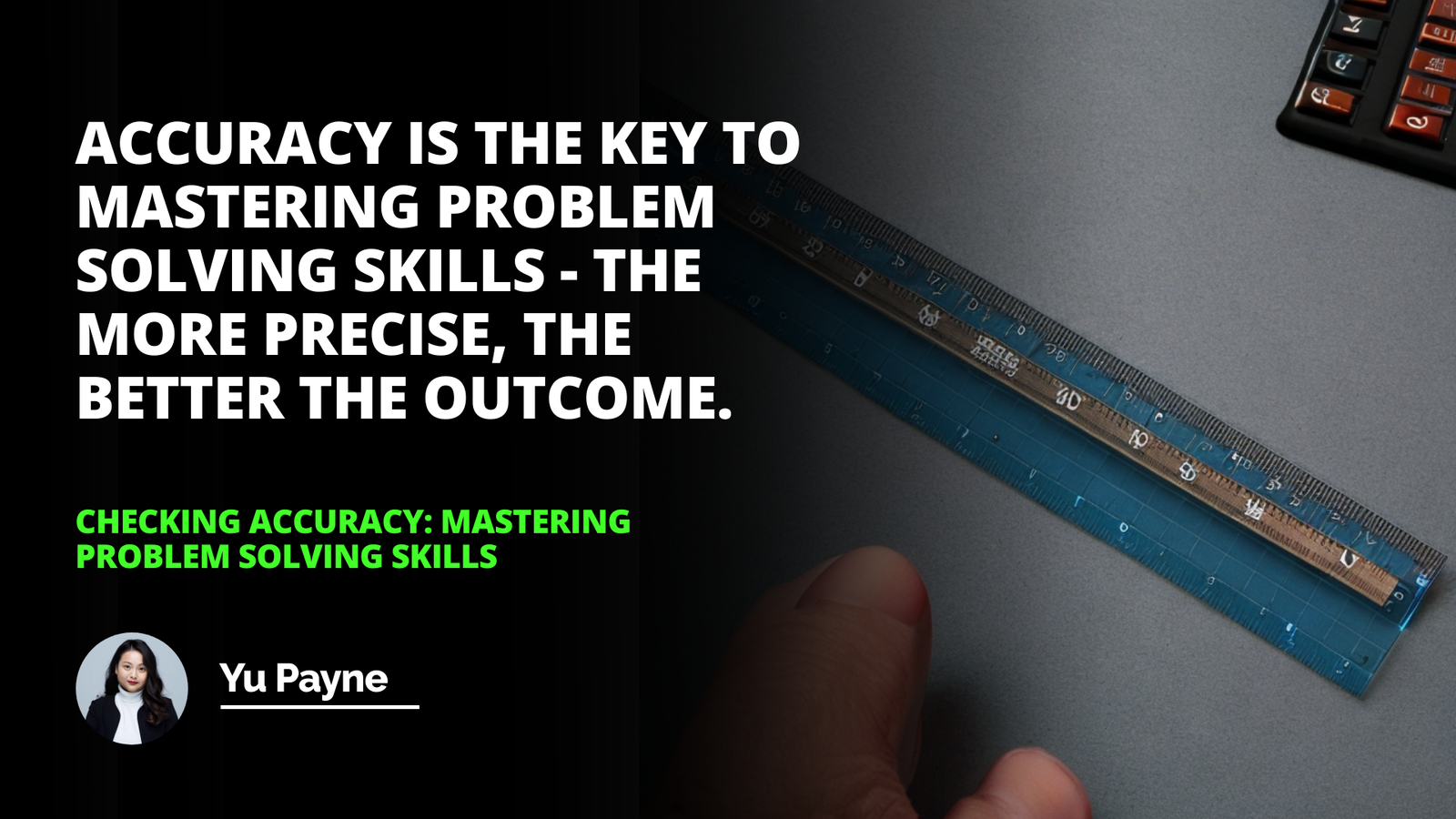
Heuristic Analysis: Unraveling the Cognitive Intricacies of User Experience Design
In the quest for enhancing strategic thinking and decision-making, heuristic analysis stands as a pivotal tool. It simplifies complexities, unravels user patterns, and sets the stage for innovation and efficiency in various disciplines. This blog post delves into the essence of heuristic analysis, exploring its foundations, applications, particularly in user experience (UX) design, and its broader implications in cognitive psychology.
We will unravel the layers of insight one can obtain from prudent heuristic evaluation and how it equips professionals with a problem-solving certificate and a leap in their analytical repertoire, especially relevant for those engaged in expert evaluation vs user testing. By understanding the role of heuristics in problem solving and the nuances of cognitive biases in decision making, we can harness the power of heuristic analysis in UX design to create exceptional user experiences.
Understanding Heuristics
Heuristics are cognitive shortcuts or rules of thumb that humans naturally develop to make decision-making more efficient. In a world awash with information, our minds have adapted techniques to swiftly navigate through complexities without needing exhaustive processing power. This comes with a tradeoff; while heuristics expedite decision-making, they can sometimes lead to less accurate or biased outcomes. Gaining a deep understanding of these mental shortcuts, hence, is a way to master one's thought processes and to predict the behavior of others.
In the realm of decision-making, heuristics serve as the metaphorical tools by which we carve out resolutions from the thick marble slab of data and stimuli surrounding us. They are the essence distilled from past experiences, convalescing into a guide for present and future actions. This process, although seemingly subconscious, is rich with intentionality—creating patterns that are valuable for analysis and adaptation. On the foundation of this understanding, heuristic analysis emerges as a means to systematically study these patterns for strategic advantage.
At its core, a heuristic triumphs in its psychological basis, allocating respite to the taxing endeavor of continual conscious computation. Cognitive scientists have long been fascinated by the intricate web of heuristics that govern human thought. By distilling these cognitive mechanisms, one can infer the propensities of their counterparts, preemptively address common perceptual pitfalls, and harness successful strategies in problem-solving scenarios. Such a grasp on psychology is essential for anyone seeking to excel in domains requiring keen judgment and decisive action.
How To Unlock Problem Solving Skills And Make Better Decisions
Practical Techniques İn Descriptive Statistics For Data Analysis

As Nobel Laureate Herbert A. Simon aptly put it in his seminal work, "The Sciences of the Artificial," heuristics are "methods for arriving at satisfactory solutions with modest amounts of computation" (Simon, 1996, p. 119). This encapsulates the essence of heuristics—an efficient means to navigate complex decision spaces, albeit with the potential for suboptimal outcomes.
The Importance of Heuristic Analysis in User Experience Design
In an age where user-centric design principles dominate the technology landscape, heuristic analysis becomes an indispensable ally, guiding UX designers in crafting experiences that resonate with users. This analytic method positions itself as the bridge between designer intent and user satisfaction, revealing discrepancies and aligning outcomes with user expectations. It's a kind of congruence that is not merely appreciated but has become expected in the user's digital engagement.
When incorporated into UX design, heuristic analysis fosters a deliberate, iterative process steered towards excellence. Each iteration is inflamed with the potential of improved user interaction, be it through better navigability, increased accessibility, or heightened aesthetic appeal. Incorporating this technique spells not just better design but an elevation of the user's journey, paving the pathway for loyalty and continued engagement in an increasingly competitive digital world.
A compelling case study to illuminate the effectiveness of heuristic analysis in UX can be observed in the redesign of a popular e-commerce platform. The initial design overlooked several usability principles, leading to customer frustration and abandoned shopping carts. Through heuristic evaluation, designers pinpointed the pain points—unclear call-to-action buttons, convoluted checkout processes, and poor information hierarchy. Addressing these issues led to a design that was not just visually engaging but functionally enviable, yielding a notable uplift in user satisfaction and conversion rates.
As Donald A. Norman, a renowned cognitive scientist and usability expert, emphasizes in his book "The Design of Everyday Things," good design is about more than just aesthetics; it's about understanding the user's needs, capabilities, and limitations (Norman, 2013). Heuristic analysis provides a structured framework to assess these factors, enabling designers to create interfaces that are not only visually appealing but also intuitive and user-friendly.
Root Cause Analysis Techniques For Effective Problem Solving
Cause And Effect Analysis For Decision Making Transformation
The Process of Conducting Heuristic Analysis
Embarking on heuristic analysis begins with a systematic approach, methodically dismantling and examining the constituent elements of the product or system in question. This entails careful observation, critical questioning, and expert scrutiny, often by those who hold a problem-solving certificate or have deep domain expertise gleaned from online certificate programs. The analyst must transmute personal biases and preconceptions into objective considerations to ensure the reliability of the process.
It is crucial to differentiate between heuristic evaluation and usability testing, though both are rooted in improving user experiences. While heuristic analysis is typically an expert-led assessment, concerned with aligning designs with established principles, usability testing places the product in the hands of actual users to ascertain performance in real-world scenarios. The former examines conformity to standards, whereas the latter gauges authentic user reactions and responses.
Interpreting the outcomes of a heuristic evaluation demands not only a nuanced understanding of design principles but also the sagacity to translate findings into actionable guidance. Analysts synthesize observations into potent insights, identifying patterns that merit homage or malpractices that clamor for rectification. Strategically prioritizing these insights enables organizations to deploy resources with precision, optimizing the design to harmonize with user needs and expectations.
In their seminal paper "Heuristic Evaluation of User Interfaces," Jakob Nielsen and Rolf Molich outline a systematic approach to conducting heuristic analysis (Nielsen & Molich, 1990). This involves having a small group of evaluators examine the interface independently, using a set of established usability principles as a guide. The evaluators then compare their findings, prioritizing issues based on their severity and potential impact on the user experience.
Common Heuristics Used in UX Design
As we delve into the practicalities of heuristic analysis, we encounter the tenets that define the common heuristic principles in design. Each heuristic stands as a beacon, guiding designers away from potential pitfalls and towards a more intuitive and user-friendly interface. Recognizing and understanding these principles are akin to mastering the vocabulary of user-centric design—each word brimming with nuance and function.
Heuristic evaluation in UX design often circles back to a set of foundational principles devised by Jakob Nielsen and Rolf Molich—ten commandments of sorts that encapsulate the essence of an optimal user experience. These range from ensuring system visibility and matching the system with the real world, to helping users recognize, diagnose, and recover from errors. The heuristics not only serve as checkpoints but also as creative springboards, inspiring innovation within the framework of tried-and-true design paradigms.
To elucidate these heuristics, let us consider an online shopping experience:
1- Consistency and standards, one of the pivotal heuristics, ensure that users are not befuddled by differing terminologies or design patterns within the same application.
2- Error prevention, another key heuristic, is exemplified in form designs that preemptively alert users of incorrect input before submission.
3- User control and freedom allows users to easily undo or redo actions, providing a sense of control and reducing frustration.
4- Recognition rather than recall minimizes the user's memory load by making actions and options visible and easily accessible.
5- Flexibility and efficiency of use caters to both novice and experienced users, offering accelerators and customization options.
Each heuristic is instrumental, shaping the product into a more approachable and gratifying entity for the users it serves.
In his book "About Face: The Essentials of Interaction Design," Alan Cooper emphasizes the importance of designing with user goals in mind (Cooper, 2014). By aligning design decisions with these heuristic principles, UX practitioners can create interfaces that not only meet user expectations but also facilitate efficient and satisfying interactions.
Potential Drawbacks and Limitations of Heuristic Analysis
While heuristic analysis is a formidable tool in refining UX design, it is not without its potential drawbacks. The very nature of heuristics—being shortcuts based on generalized rules—means that they might not always encapsulate the nuance of specific user interactions or be sensitive to the unique context of every design challenge. This reliance on generalizations can lead to oversights that might require additional user testing to uncover.
To counteract the limitations of heuristic analysis, it is prudent to supplement it with complementary methods such as user testing, A/B testing, and direct feedback mechanisms. These additional layers of evaluation contribute to a holistic understanding of the user experience, ensuring that potential blind spots are minimized, and the design is thoroughly vetted from multiple angles. Understanding these constraints is paramount for professionals invested in user experience, and especially for those seeking to validate their authority with a problem-solving certificate.
In their book "User and Task Analysis for Interface Design," JoAnn T. Hackos and Janice C. Redish caution against over-reliance on heuristic analysis, noting that it should be used in conjunction with other user-centered design methods (Hackos & Redish, 1998). They argue that while heuristics provide valuable guidelines, they cannot replace the insights gained from direct user involvement and feedback.
Conclusion
Throughout this foray into heuristic analysis, we have traversed the conceptual underpinnings of heuristics, unearthed their profound significance in UX design, and mapped the process by which they are operationalized. This method not only aids in elevating strategic thinking but thoroughly enriches the user's interaction with technology. As we disembark from this analytical journey, we acknowledge the overriding importance of heuristics in decision making and the evolution of UX design towards peaks of functionality and pleasure.
In closing, we pay homage to the synergetic bond between analysis and intuition. Whether readers are seasoned professionals seeking to reinforce their expertise with online certificate programs or novices astir with curiosity, the pursuit of mastery in heuristic analysis in UX design is a worthwhile endeavor. It is an invitation to delve into the cognitive mechanics of decision making, and an elicitation to scholars and practitioners alike to wield these insights in crafting superior user experiences. We encourage all aspirants to engage with heuristic analysis, hence unlocking the mysteries of the user's mind and the potentialities of strategic design.
As we navigate the ever-evolving landscape of technology and user expectations, heuristic analysis will continue to serve as a guiding light, illuminating the path towards more intuitive, efficient, and delightful user experiences. By embracing the benefits of heuristic evaluation and understanding how to conduct heuristic analysis, UX designers can create interfaces that not only meet user needs but also exceed their expectations.
References
Cooper, A. (2014). About Face: The Essentials of Interaction Design (4th ed.). John Wiley & Sons.
Hackos, J. T., & Redish, J. C. (1998). User and Task Analysis for Interface Design. John Wiley & Sons.
Nielsen, J., & Molich, R. (1990). Heuristic evaluation of user interfaces. In Proceedings of the SIGCHI Conference on Human Factors in Computing Systems (pp. 249-256). ACM.
Norman, D. A. (2013). The Design of Everyday Things: Revised and Expanded Edition. Basic Books.
Simon, H. A. (1996). The Sciences of the Artificial (3rd ed.). MIT Press.
Frequently Asked Questions
What is the role of heuristic analysis in enhancing strategic thinking in an organization?
The Role of Heuristic Analysis
Understanding Heuristics
Heuristics serve as mental shortcuts. They simplify decision-making processes. Organizations often rely on heuristic principles. These principles can sharpen strategic thinking. They guide leaders in complex situations.
Heuristic Analysis in Decision-Making
Heuristic analysis involves examining these shortcuts. In an organization, it highlights intuitive judgments. It also reveals potential biases in decisions. This analysis can refine strategies.
Enhancing Strategic Thinking
Strategic thinking demands foresight and insight. Heuristic analysis provides a framework for both. It enables leaders to consider numerous variables quickly. It streamlines scenario planning and forecasting.
The Process of Heuristic Analysis
Firstly, identify existing heuristics. Assess their effectiveness in given contexts. Adjust or develop new heuristics accordingly. Integrate them into strategic planning activities.
Learning from Past Decisions
Analyze past decisions that involved heuristic thinking. Measure outcomes against expectations. Determine which heuristics led to success. Replicate these in similar future circumstances.
Adapting to New Challenges
Heuristic analysis is not static. As challenges evolve, so must heuristics. Regular reevaluation ensures they remain relevant. This agility is key in maintaining strategic edge.
Avoiding Potential Downfalls
Be wary of over-reliance on heuristics. It may lead to cognitive biases. Anchoring, availability, and confirmation bias can distort judgment. Awareness of these biases is critical.
Encouraging Collaboration and Knowledge Sharing
Engage team members in heuristic analysis. Diversity of thought enriches the process. Collaborative environments foster more robust heuristics. They prevent tunnel vision in decision-making.
Training and Development
Invest in heuristic-related training. Enhance the organization's strategic capacity. Train employees to recognize and apply effective heuristics. Provide tools to evaluate their usefulness.
Measuring the Impact of Heuristic Analysis
Assess the impact of heuristics on performance. Set tangible metrics for evaluation. Adjust strategies based on data-driven insights. This ensures continuous improvement.
Heuristic analysis is vital in enhancing strategic thinking. It empowers organizations to navigate uncertainty. It champions streamlined decision-making. In essence, it offers a competitive advantage in a complex world.

How can one incorporate heuristic analysis in their decision-making process to yield more strategic results?
Understanding Heuristic Analysis
Heuristic analysis is a technique. It simplifies complex decision-making. Usually, experts employ known heuristics. These are rule-of-thumb strategies. They cut down on time. They aid in reaching acceptable solutions. In strategy, they are invaluable.
Identifying Key Heuristics
Start by pinpointing the heuristics. Various heuristics exist. The availability heuristic is one. It assesses the frequency of events. Also, the representativeness heuristic. It considers likeness and assumes related outcomes. The anchoring heuristic affects initial information reliance. Every heuristic serves a unique purpose. Recognize the right one.
Integrating Heuristics into Processes
Decisions demand structure. Introduce heuristics into decision matrices. They inform priorities. They aid in judging options. This integration fosters strategic decisions. Structure implies predictability. Predictability breeds better strategy. Include heuristics in standard operating procedures. They will streamline decision-making.
Heuristic Traps to Avoid
Heuristics are not infallible. They can lead to bias. Availability may cause overemphasis on recent events. Representativeness may misguide due to perceived similarities. Anchoring might skew perspectives with initial information. Awareness is crucial. Recognize when a heuristic misleads. Adjust accordingly.
Continuous Learning and Adaptation
Strategic outcomes arise from learning. Heuristics demand continuous evaluation. Contexts change. Heuristics should too. Learn from previous decisions. Modify heuristics as needed. This leads to refined decision-making. Adapt heuristics to the current environment. Stay relevant. Stay effective.
Conclusion
Heuristics guide us. They simplify tough choices. Use them wisely. Stay alert to their pitfalls. Adapt and learn. Advance your strategic decision-making. Embrace the power of heuristic analysis.

What are the potential disadvantages or pitfalls of using heuristic analysis in strategic decision-making?
Heuristic Analysis in Strategic Decision-Making
Understanding Heuristic Analysis
Heuristic analysis employs mental shortcuts. It simplifies complex decision-making. Often, it relies on prior experience. This approach can be quick. Yet, it does not guarantee accuracy.
Pitfalls of Heuristic Availability
Heuristics often seem reliable. Yet, they can fail in strategic contexts. Our memories are not always accurate. Recalled events shape decisions. This can breed errors. Known as the availability heuristic, it skews reality. We think what we remember is common. This is not always true.
- Misguided focus
- Overshadowed data
- Biased judgments
The Representativeness Heuristic Trap
Another shortcut is representativeness. We see patterns. We ignore base rate information. Our brain seeks familiar scenarios. New challenges get old solutions. Often, this misleads our strategy.
- Overlooked novelty
- Rejected innovation
- Stifled creativity
Anchoring Heuristic Downsides
Anchoring affects decisions, too. First information becomes the benchmark. We cling to initial figures. Adjustments remain close to the anchor. This limits strategic flexibility.
- Inflexible thinking
- Missed opportunities
- Restricted development
Overconfidence from Heuristics
Confidence often follows heuristics. Yet, it can be misplaced. Decisions feel right but may not be. Overconfidence blinds us to risks. We may ignore vital data.
- Neglected evidence
- Underestimated threats
- Overrated certainty
Heuristic-Induced Confirmation Bias
Confirmation bias emerges from heuristics. We seek what supports our views. Contrary evidence is disregarded. Strategic decisions need diverse perspectives. Heuristics can close minds.
- Dismissed opposition
- Unchallenged assumptions
- Unexplored alternatives
The Pitfall of Framing Effects
Decision framing shapes our thoughts. How we present information matters. Heuristics can make us prone to framing. Certain wordings influence our choices. Strategic decisions need clear, unbiased framing.
- Misinterpreted context
- Manipulated preferences
- Misguided conclusions
Escalation of Commitment and Sunk Cost Fallacy
Commitment can escalate irrationally. Past decisions influence the present. Sunk costs should not dictate future actions. Heuristics prevent us from cutting losses when necessary.
- Wasted resources
- Continuing failed projects
- Neglected better options
Groupthink from Heuristic Consensus
In groups, heuristics can lead to consensus. This is not always positive. Groupthink can limit outside-the-box thinking. Critical voices get silenced. The status quo prevails.
- Reduced innovation
- Silenced dissent
- Compromised group decisions
The Impact on Long-Term Strategic Planning
Strategic planning looks beyond the immediate. Heuristics focus on here and now. They can overlook long-term effects. Immediate gains may lead to future losses.
- Neglected future implications
- Short-term bias
- Overlooked sustainability
Final Thoughts on Heuristic Analysis
Heuristic analysis in strategies carries risks. Awareness mitigates these pitfalls. Diverse inputs and critical thinking are key. We should combine heuristics with rigorous analysis. This creates robust strategic decisions. Balance is essential in strategic decision-making.



